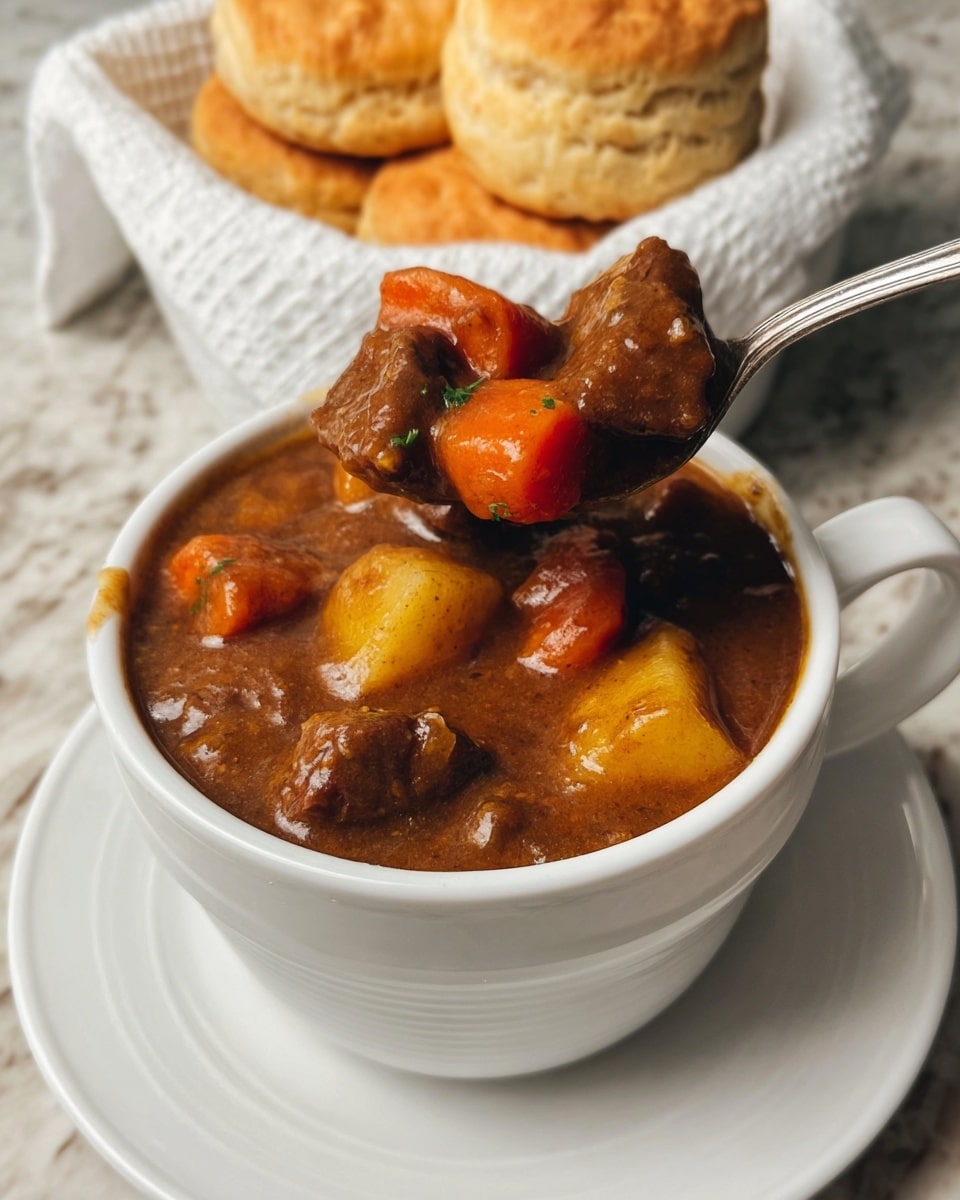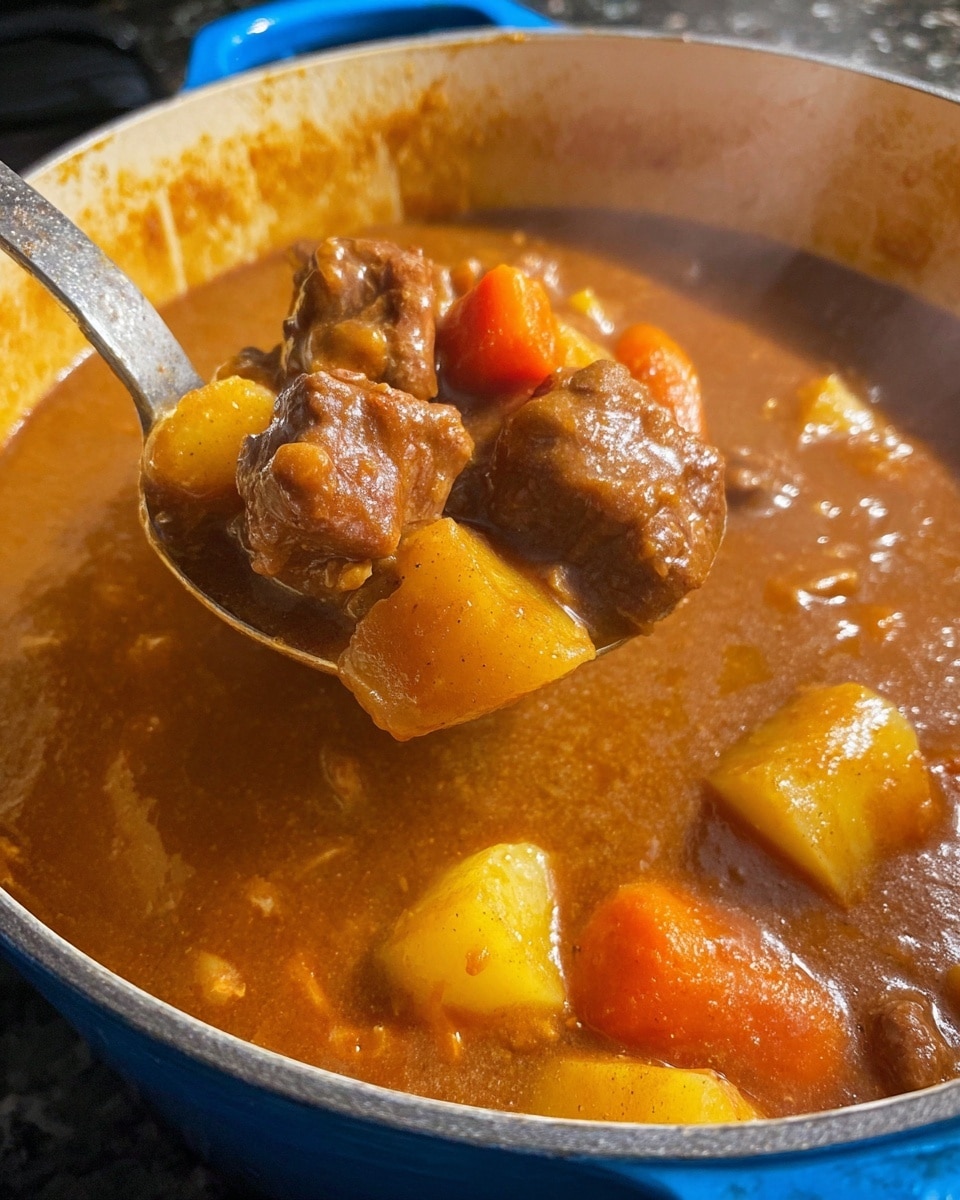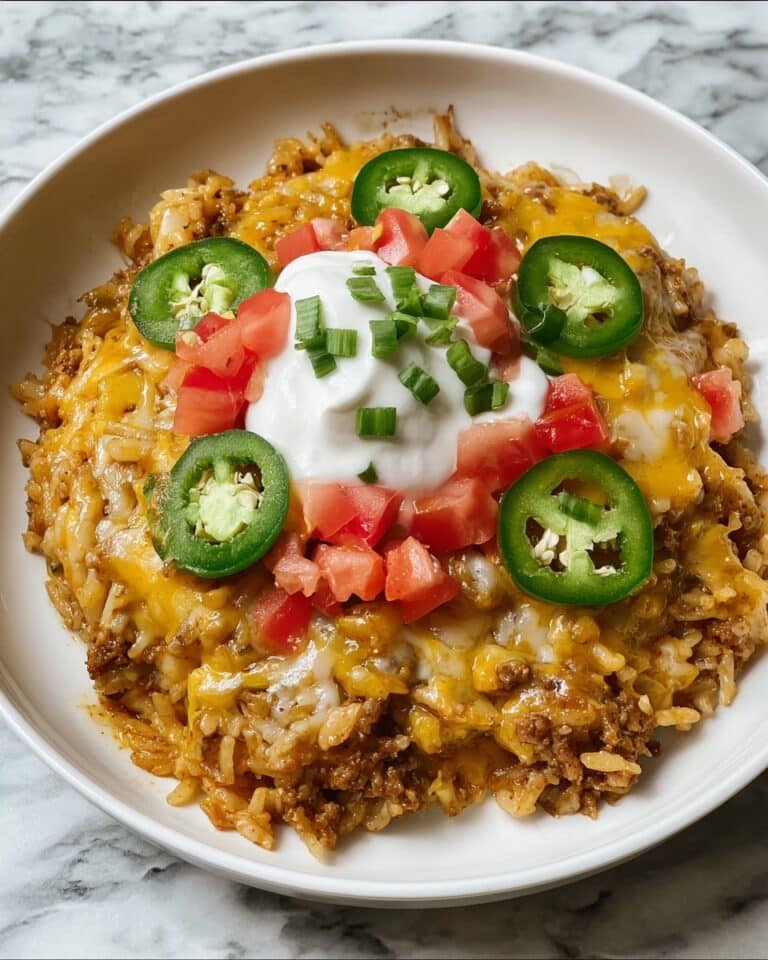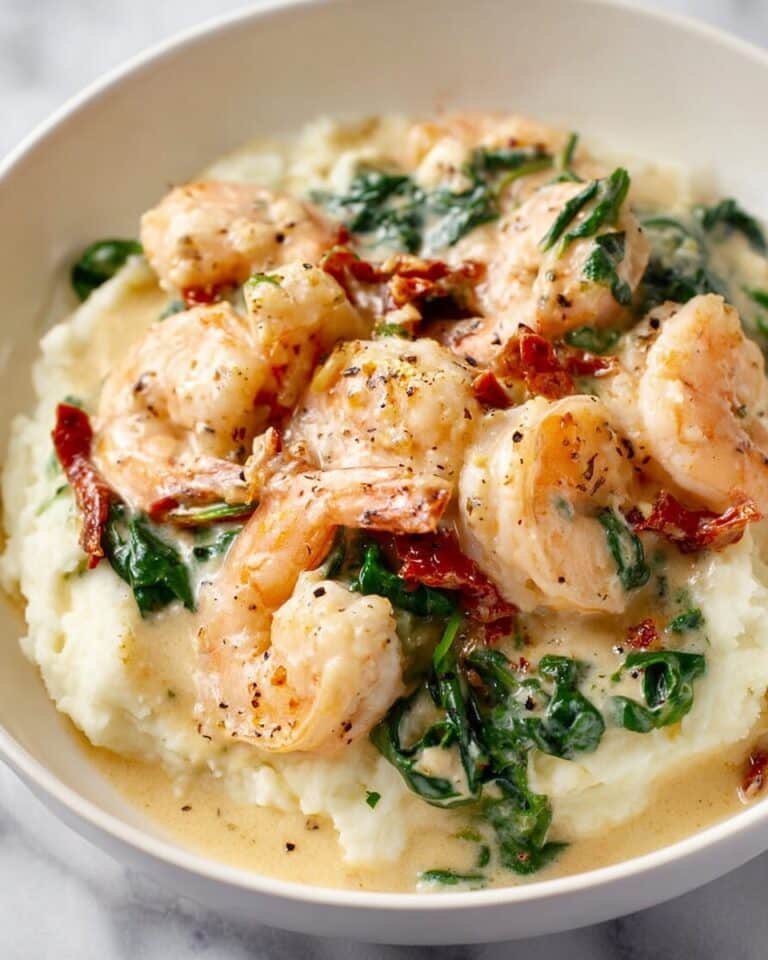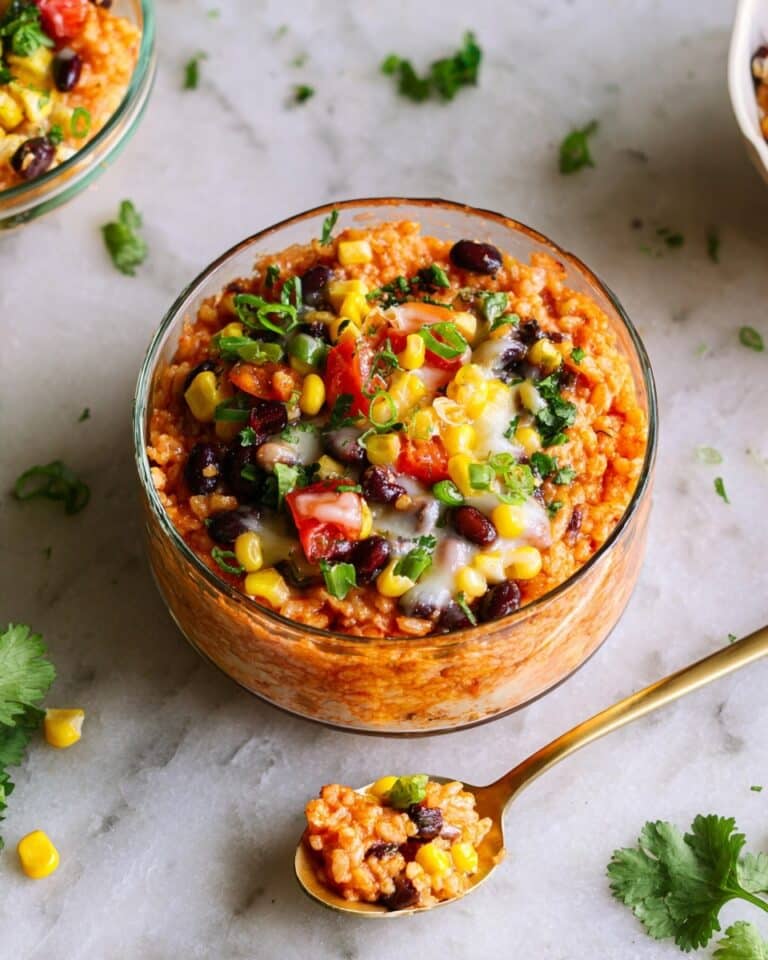Hearty Beef Stew Recipe
If you’re craving comfort in a bowl, this Hearty Beef Stew Recipe is just the ticket. It’s exactly the kind of dish I come back to when I want something warm, satisfying, and bursting with rich flavors that remind me of cozy family dinners. The tender chunks of beef, melt-in-your-mouth potatoes, and perfectly softened carrots all simmer together to create a stew that feels like a warm hug on chilly days.
Whether you’re making this for a weeknight dinner or hosting friends on a lazy weekend, this stew stands up to every occasion—filling and delicious without being complicated. What I love about this Hearty Beef Stew Recipe is how it balances straightforward ingredients with deep, comforting flavors. I’m excited to walk you through what makes this recipe special and how to get it just right in your kitchen.
Why This Recipe Works
- Flavorful Browning: Searing the beef adds rich depth and helps thicken the stew naturally.
- Balanced Ingredients: The mix of hearty vegetables and herbs creates a perfect harmony of taste and texture.
- Slow Simmering: Letting it cook low and slow tenderizes the meat and develops deep, warming flavors.
- Simple Thickening: Adding cornstarch at the end lets you control the stew’s consistency to suit your preference.
Ingredients & Why They Work
This Hearty Beef Stew Recipe uses classic ingredients that complement each other in both taste and texture. You’ll find that each component plays a key role, from the cut of beef to the variety of potatoes—I always recommend shopping for fresh, quality produce and meat to elevate your stew.
- Stew Meat: Choose chuck or round roast for the ideal balance of flavor and tenderness after slow cooking.
- All Purpose Flour: Helps create a savory crust on the beef and thickens the stew naturally.
- Garlic Powder & Onion Powder: These add depth without overpowering, blending seamlessly with fresh aromatics.
- Vegetable Oil: A neutral oil that’s perfect for browning beef without burning.
- Yellow Onion: Adds sweetness and a savory base for the stew’s rich flavor.
- Celery: Brings a subtle freshness and slight crunch that balances the hearty ingredients.
- Garlic Cloves: Minced fresh garlic infuses the stew with warmth and aromatic depth.
- Tomato Paste: A flavor booster that caramelizes to add a touch of sweetness and richness.
- Beef Broth: The liquid foundation providing meaty, savory essence—homemade if possible!
- Worcestershire Sauce: Adds umami complexity and a subtle tang to deepen the flavor.
- Herbs De Provence: A beautiful blend of herbs that elevate the stew with fragrant notes.
- Carrots: Sweet and tender, they perfectly complement the robust beef.
- Yukon Gold Potatoes: Creamy texture holds up well to simmering, and I like to leave the skin on for extra nutrients.
- Bay Leaves: Impart an earthy aroma that rounds out the stew’s flavors.
- Cornstarch: Used to thicken the stew gently without changing the flavor.
Tweak to Your Taste
I love making this Hearty Beef Stew Recipe my own by swapping veggies or boosting the herbs depending on the season. Feel free to personalize it—this stew is a fantastic kitchen canvas to suit your cravings or what you have on hand.
- Peas Addition: Once, I tossed in a cup of frozen peas during the last 15 minutes—it added a nice pop of color and sweetness that elevated the dish.
- Potato Variety: Sometimes I use red potatoes or even sweet potatoes instead of Yukon Golds for a different flavor and texture.
- Herbs Boost: Adding fresh thyme or rosemary along with the Herbs de Provence creates an even more aromatic and herbaceous stew.
- Thickness Control: If you prefer a lighter broth, simply skip the cornstarch step or add a bit more beef broth for a soupier stew.
Step-by-Step: How I Make Hearty Beef Stew Recipe
Step 1: Coat the Beef for Flavor and Thickness
Start by tossing your stew meat in a Ziploc bag with flour, garlic powder, onion powder, salt, and pepper. Shaking it up makes sure every piece gets coated evenly. This step not only flavors the meat but also helps thicken your stew later—don’t skip it! I’ve noticed good flour coverage leads to a richer, velvety sauce.
Step 2: Brown the Meat in Batches
Heat your vegetable oil in a large pot and brown the meat in batches. Avoid crowding the pan—getting a nice brown crust on the meat is key to flavor. You don’t need to cook it fully here, just develop color. I usually take my time with this step because that Maillard reaction is what makes this stew stand out. Set the browned meat aside once done.
Step 3: Build the Flavor Base with Veggies
Using the same pot, cook diced onions and celery over medium heat until softened, about 7 minutes. Then add minced garlic and sauté for a minute more. The veggies soak up those beefy drippings, which is exactly what you want. This base gives your stew layers of flavor before the liquids even go in.
Step 4: Add Tomato Paste and Beef Broth
Stir in tomato paste and cook it for a few minutes. This caramelizes the paste, cutting its acidity and adding a beautiful depth. Then pour in the beef broth, scraping up all those delicious browned bits from the bottom. This step always feels like magic to me—the flavor just blossoms here.
Step 5: Return Meat, Add Seasonings, and Simmer
Put the browned beef back in the pot along with Worcestershire sauce and Herbs de Provence. Bring it to a simmer, cover, and cook low and slow for about 2 hours. This is where the meat gets tender, and the flavors marry beautifully. Check occasionally to ensure it stays at a gentle simmer—you want to avoid boiling, which can toughen the beef.
Step 6: Add Vegetables and Bay Leaves
After two hours, stir in the carrots, potatoes, and bay leaves. Continue simmering for another hour until the veggies are fork-tender. This layering approach keeps everything perfectly cooked—no mushy potatoes here, just that ideal tender bite. Don’t forget to fish out the bay leaves before serving!
Step 7: Thicken the Stew if You Like
Mix cornstarch with cold water and stir it into the stew. Let it cook a few more minutes until thickened. I always taste and adjust seasoning here—salt and pepper can make all the difference. If you’re not a fan of thick stews, this step is optional, but I find it gives the perfect spoon-coating consistency.
Pro Tips for Making Hearty Beef Stew Recipe
- Use Quality Meat: Choosing chuck roast with good marbling ensures juicy, tender beef once slow-cooked.
- Don’t Skip Browning: That caramelized crust on the meat adds incredible flavor you don’t get otherwise.
- Low and Slow Simmering: Patience here means melt-in-your-mouth beef and perfectly cooked veggies.
- Adjust Thickness at End: Thickening with cornstarch lets you customize the stew’s texture based on your mood.
How to Serve Hearty Beef Stew Recipe

Garnishes
I love to sprinkle freshly chopped parsley or a little thyme over the top just before serving—it adds a fresh pop of color and a subtle herbaceous note that brightens each bite. A swirl of sour cream or a dollop of mustard on the side can also add a nice tangy contrast.
Side Dishes
This stew is hearty enough to be the star, but if you feel like adding something on the side, crusty bread or soft dinner rolls are my go-to picks for sopping up every last bit of sauce. A simple green salad with a light vinaigrette can help balance the richness.
Creative Ways to Present
For special gatherings, try serving the stew in rustic bread bowls—everyone loves the fun presentation and the bread soaks up all that delicious sauce. Or ladle it over creamy mashed potatoes for a twist that makes it feel extra indulgent.
Make Ahead and Storage
Storing Leftovers
After the stew cools, I store leftovers in airtight containers in the fridge—it usually lasts beautifully for up to 3-4 days. The flavors actually deepen overnight, making the next-day meal even better.
Freezing
Freezing this Hearty Beef Stew Recipe works great too. I portion it out in freezer-safe containers and it lasts for 2-3 months. Just be sure to cool it completely before freezing to keep the texture intact.
Reheating
I reheat the stew gently on the stovetop over low-medium heat, adding a splash of beef broth or water if it’s gotten a little thick. Stir occasionally to warm evenly and avoid scorching. You can also reheat in the microwave, but the stovetop method keeps the texture spot on.
FAQs
-
Can I use a slow cooker for this Hearty Beef Stew Recipe?
Absolutely! After browning the meat and sautéing the veggies, transfer everything to your slow cooker. Cook on low for 7-8 hours or on high for 4-5 hours until meat is tender. Add potatoes and carrots halfway through cooking to prevent them from overcooking. This hands-off method is perfect when you want dinner ready when you walk in the door.
-
What cut of beef is best for stew?
Chuck roast and bottom round are my favorite for stewing—they have enough fat and connective tissue to become tender and flavorful after slow cooking. Avoid leaner cuts like sirloin, which can get tough and dry in long cooking.
-
How can I make the stew thicker without cornstarch?
If you prefer not to use cornstarch, you can mash a few pieces of potato in the stew to naturally thicken the liquid. Another option is to simmer uncovered for a bit longer to reduce the broth. Flour or arrowroot powder can also be alternatives to cornstarch.
-
Can I add other vegetables to this stew?
Definitely! Feel free to add mushrooms, parsnips, or turnips during the vegetable cooking phase. Peas are great too—just toss them in during the last 10-15 minutes. Adding a variety keeps the stew interesting and tailored to your preferences.
-
How do I prevent the beef from becoming tough?
Maintaining a gentle simmer and cooking low and slow is key—avoid boiling as it can toughen the meat. Also, choose cuts with more connective tissue, which breaks down during long cooking, turning tender and flavorful.
Final Thoughts
This Hearty Beef Stew Recipe holds a special place in my kitchen and heart. It’s one of those fail-safe classics that never disappoints and continuously delivers comfort and rich flavor. I can’t wait for you to make it your own and experience how those simple ingredients come together to create something truly nourishing and soul-satisfying. Once you try it, I bet it’ll be a go-to favorite in your home too!
Print
Hearty Beef Stew Recipe
- Prep Time: 30 minutes
- Cook Time: 3 hours
- Total Time: 3 hours 30 minutes
- Yield: 6 servings
- Category: Main Course
- Method: Stovetop
- Cuisine: American
Description
This Hearty Beef Stew is a comforting classic made with tender stew meat browned to perfection, simmered with vegetables like carrots and Yukon Gold potatoes in a rich, flavorful broth thickened with a touch of cornstarch. Perfect for a satisfying family meal that warms you from the inside out.
Ingredients
Main Ingredients
- 2 lbs Stew Meat (chuck or round roast cut into bite-sized pieces)
- 1/2 cup All Purpose Flour
- 1 tsp Garlic Powder
- 1 tsp Onion Powder
- Salt and Pepper to taste
- 1/4 cup Vegetable Oil
- 1 small Yellow Onion, Diced
- 2 Ribs of Celery, Diced
- 4-5 Garlic Cloves, Minced
- 3 oz Tomato Paste
- 3 cups Beef Broth
- 1 tbsp Worcestershire Sauce
- 1 tsp Herbs De Provence
- 1 lb Carrots, Peeled and Sliced
- 1.5 lbs Yukon Gold Potatoes, Cut into Bite-sized Pieces
- 2 Bay Leaves
- 2 tbsp Cornstarch
- 2 tbsp Cold Water
Instructions
- Coat the Meat: In a large Ziploc bag, mix together the flour, garlic powder, onion powder, salt, and pepper. Add the stew meat and shake well to evenly coat all pieces.
- Brown the Meat: Heat vegetable oil in a large pot over medium heat. Brown the coated stew meat in batches without overcrowding, achieving a nice color but not fully cooking through. Remove and set aside.
- Sauté Vegetables: In the same pot, add diced onion and celery, cooking for about 7 minutes until softened. Add minced garlic and sauté for an additional 1 minute.
- Add Tomato Paste and Broth: Stir in the tomato paste and cook for a few minutes to caramelize and reduce acidity. Then add the beef broth, scraping the bottom of the pot to incorporate all browned bits.
- Simmer Meat and Seasonings: Return the browned meat to the pot along with Worcestershire sauce and herbs de Provence. Reduce heat and let simmer gently for 2 hours to develop flavor and tenderness.
- Add Vegetables and Continue Simmering: Add sliced carrots, diced potatoes, and bay leaves. Simmer for an additional 1 hour until vegetables are tender. Remove bay leaves and season with salt and pepper as needed.
- Thicken the Stew: Mix cornstarch with cold water to create a slurry. Stir into the stew and cook for a few minutes until thickened. Skip this step if you prefer a thinner stew.
Notes
- For added sweetness and color, you can add 1 cup of frozen peas during the last 10-15 minutes of cooking.
- If you want a thinner stew, add more beef broth to reach your desired consistency instead of thickening with cornstarch.
- You may peel the potatoes if preferred, but Yukon Gold skins are tender and add texture.
- Browning the meat in batches is key to developing flavor and preventing steaming.
- Simmering slowly over low heat allows the meat to become tender and the flavors to meld beautifully.
Nutrition
- Serving Size: 1 cup
- Calories: 350 kcal
- Sugar: 5 g
- Sodium: 650 mg
- Fat: 15 g
- Saturated Fat: 5 g
- Unsaturated Fat: 9 g
- Trans Fat: 0 g
- Carbohydrates: 28 g
- Fiber: 4 g
- Protein: 30 g
- Cholesterol: 85 mg

